Related Research Articles

Orchids are plants that belong to the family Orchidaceae, a diverse and widespread group of flowering plants with blooms that are often colourful and fragrant. Orchids are cosmopolitan plants that are found in almost every habitat on Earth except glaciers. The world's richest diversity of orchid genera and species is found in the tropics.

Adaptation is a 2002 American comedy-drama film directed by Spike Jonze and written by Charlie Kaufman. It features an ensemble cast led by Nicolas Cage, Meryl Streep, and Chris Cooper, with Cara Seymour, Brian Cox, Tilda Swinton, Ron Livingston, and Maggie Gyllenhaal in supporting roles.
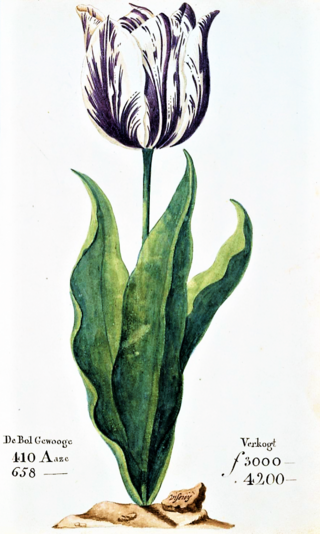
Tulip mania was a period during the Dutch Golden Age when contract prices for some bulbs of the recently introduced and fashionable tulip reached extraordinarily high levels. The major acceleration started in 1634 and then dramatically collapsed in February 1637. It is generally considered to have been the first recorded speculative bubble or asset bubble in history. In many ways, the tulip mania was more of a then-unknown socio-economic phenomenon than a significant economic crisis. It had no critical influence on the prosperity of the Dutch Republic, which was one of the world's leading economic and financial powers in the 17th century, with the highest per capita income in the world from about 1600 to about 1720. The term tulip mania is now often used metaphorically to refer to any large economic bubble when asset prices deviate from intrinsic values.

Bibliomania can be a symptom of obsessive–compulsive disorder which involves the collecting or even hoarding of books to the point where social relations or health are damaged.

Susan Orlean is an American journalist, television writer, and bestselling author of The Orchid Thief and The Library Book. She has been a staff writer for The New Yorker since 1992, and has contributed articles to many magazines including Vogue, Rolling Stone, Esquire, and Outside. In 2021, Orlean joined the writing team of HBO comedy series How To with John Wilson.
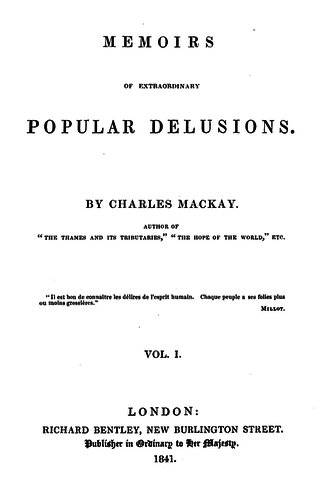
Extraordinary Popular Delusions and the Madness of Crowds is an early study of crowd psychology by Scottish journalist Charles Mackay, first published in 1841 under the title Memoirs of Extraordinary Popular Delusions. The book was published in three volumes: "National Delusions", "Peculiar Follies", and "Philosophical Delusions". Mackay was an accomplished teller of stories, though he wrote in a journalistic and somewhat sensational style.
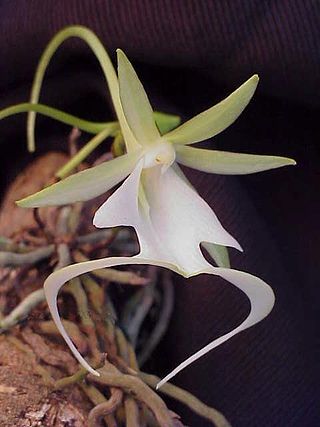
Dendrophylax lindenii, the ghost orchid is a rare perennial epiphyte from the orchid family (Orchidaceae). It is native to Florida, the Bahamas, and Cuba. Other common names include palm polly and white frog orchid.
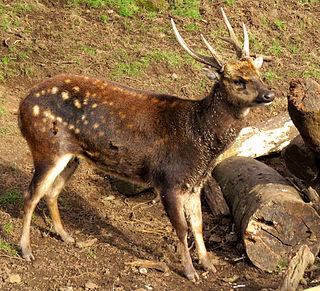
The Visayan spotted deer, also known as the Visayan deer, the Philippine spotted deer or Prince Alfred's deer, is a small, endangered, primarily nocturnal species of deer found in the rainforests of the Visayan Islands of Panay and Negros. It once was found across other islands, such as Cebu, Guimaras, Leyte, Masbate, and Samar. It is one of three endemic deer species found in the Philippines, although it was not recognized as a separate species until 1983. An estimated 2,500 mature individuals survived worldwide in 1996, according to the IUCN; today’s surviving wild number is uncertain. The diet of the deer, which consists of a variety of different types of grasses, leaves, and buds within the forest, is the primary indicator of its habitat. Since 1991, the range of the species has severely decreased and is now almost co-extensive with that of the Visayan warty pig.

The Orchid Thief is a 1998 non-fiction book by American journalist Susan Orlean, based on her investigation of the 1994 arrest of horticulturist John Laroche and a group of Seminoles in south Florida for poaching rare orchids in the Fakahatchee Strand State Preserve.

Fakahatchee Strand State Preserve is a Florida State Park just west of Copeland, Florida. It is located in the Fakahatchee Strand, a thread of forested strand (swamp) in Big Cypress, a section of the Florida Everglades off SR 29.

Plant collecting is the acquisition of plant specimens for the purposes of research, cultivation, or as a hobby. Plant specimens may be kept alive, but are more commonly dried and pressed to preserve the quality of the specimen. Plant collecting is an ancient practice with records of a Chinese botanist collecting roses over 5000 years ago.
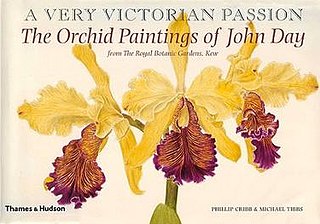
John Day (1824–1888) was an English orchid-grower and collector, and is noted for producing some 4000 illustrations of orchid species in 53 scrapbooks over a period of 15 years. These scrapbooks were donated to The Royal Botanic Gardens, Kew in 1902 by his sister, Emma Wolstenholme.The standard author abbreviation J.Day is used to indicate this person as the author when citing a botanical name.

Pteridomania or fern fever was a Victorian craze for ferns. Decorative arts of the period presented the fern motif in pottery, glass, metal, textiles, wood, printed paper, and sculpture, with ferns "appearing on everything from christening presents to gravestones and memorials".

Tulips are spring-blooming perennial herbaceous bulbiferous geophytes in the Tulipa genus. Their flowers are usually large, showy, and brightly coloured, generally red, orange, pink, yellow, or white. They often have a different coloured blotch at the base of the tepals, internally. Because of a degree of variability within the populations and a long history of cultivation, classification has been complex and controversial. The tulip is a member of the lily family, Liliaceae, along with 14 other genera, where it is most closely related to Amana, Erythronium, and Gagea in the tribe Lilieae.
Paul Hamilton Allen (1911–1963) was an American botanist noted for his work on the ecology of Central America, orchid systematics and economically important species including bananas. He was married to the former Dorothy Osdieck of Kirkwood, Missouri.
Orchid hunting is the search for orchid plants in the wild. The orchid plants are usually being acquired for the commercial market, where there was, and still is, significant demand for these unusual flowering plants.

Botanical expeditions are scientific voyages designed to explore the flora of a particular region, either as a specific design or part of a larger expedition. A naturalist or botanist would be responsible for identification, description and collection of specimens. In some cases the plants might be collected by the person in the field, but described and named by a government sponsored scientist at a botanical garden or university. For example, species collected on the Lewis and Clark Expedition were described and named by Frederick Traugott Pursh.
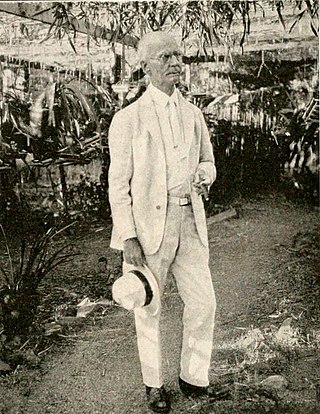
Charles Wesley Powell was an American hobbyist turned horticulturist specializing in the study of orchids (Orchidaceae). He is credited with providing scientists the first large-scale collection of orchid specimens found in Panama. In the early 1900s, he became internationally famous for his new discoveries and valuable contributions to orchidology by gathering, rediscovering, cultivating, preserving, documenting, and submitting-for-study a diverse assortment of hundreds of distinct specimens: yielding many new to science species.
Abel Aken Hunter an American botanist that collected and cataloged Panamanian orchids and a member of orchid hunting expeditions. From 1915 to 1935, Hunter treked with well-known collectors and researchers of the day such as: Charles Powell, George Pring, Carroll Dodge, Julian Steyermark, and Paul Allen. Abdel Aken Hunter and Allen's herbarium specimens, found in the Oakes Ames Herbarium at Harvard University, include four new species.
References
- ↑ Ronnie Godeanu, Nature assessed Sep 30, 2008 Nature:Obsession with Orchids
- ↑ Susan Orlean, "The Orchid Thief" 1998 Random House publishing The Orchid Thief
- ↑
 This Wikipedia article incorporates text from Orchidelirium: when love turns to obsession (4 August 2021) published by the State Library of Queensland under CC BY licence , accessed on 22 September 2021.
This Wikipedia article incorporates text from Orchidelirium: when love turns to obsession (4 August 2021) published by the State Library of Queensland under CC BY licence , accessed on 22 September 2021. - ↑ Comprehensive Orchid Culture Guide Orchid History
- ↑ Price, Cheryl Blake (2013). "VEGETABLE MONSTERS: MAN-EATING TREES IN "FIN-DE-SIÈCLE" FICTION". Victorian Literature and Culture. 41 (2): 311–327.